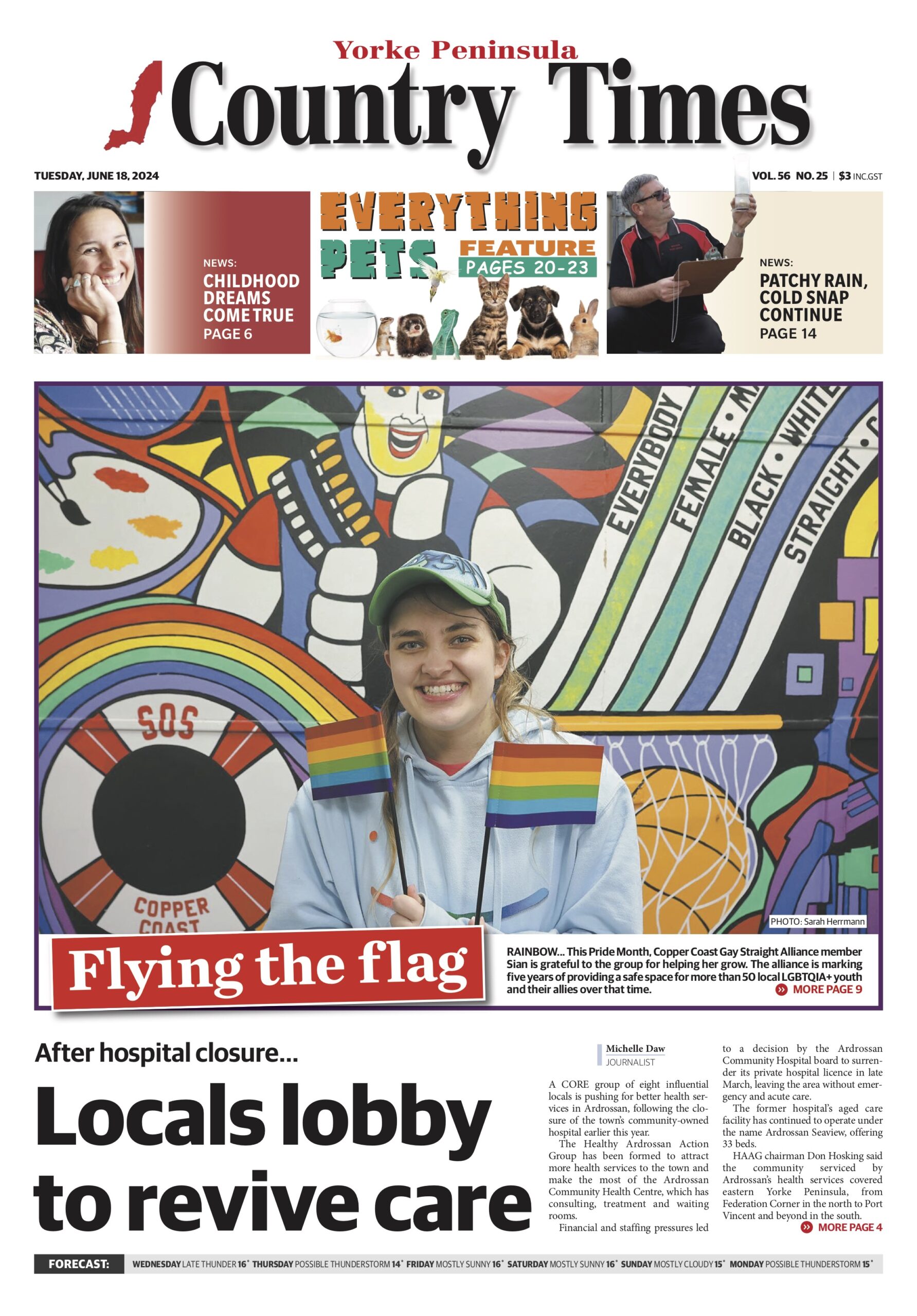Joanne Tucker, Yorke Peninsula Country Times
One of Australia’s worst invasive weeds has been identified in 31 new locations in the Northern and Yorke region, including Moonta.
Buffel grass, a declared weed in South Australia, grows rapidly, choking native grasses.
It burns hotter and is more flammable than native vegetation, and grows back faster after a fire, destroying everything else.
Northern and Yorke Landscape Board team leader David Hughes said buffel grass had been located the last time they surveyed Moonta, and the most recent inspection found it along Spencer Highway in Hamley, on the town’s southern outskirts.
The grass is typically found along roadsides and hitches rides with road and railway transport, travelling from infestations found further north.
“We have sites of buffel that we check every year and monitor, but we did notice those infestations around Moonta had actually geminated, which we hadn’t seen for a while,” he said.
“The roadside infestations have just jumped the fenceline into the adjoining properties, so we will work with those landowners to control the buffel on their properties.”
Mr Hughes said the NYLB last completed a large-scale survey in 2014 but also examined the area for buffel each year.
The latest major survey covered 2000 kilometres through the Northern and Yorke region to provide an extensive record of buffel grass occurrence along roadways in susceptible habitats.
“This was a couple of weeks’ worth of work with staff, working with a weeds botanist and surveying all the sites from 2014,” Mr Hughes said.
“The botanists took a lot of samples that they will do DNA testing on.
“Unfortunately, we found more locations and that the buffel had spread from the roadside (to private properties).”
Buffel grass is established in Crystal Brook and Port Pirie, and gets worse heading towards Port Augusta on the main highways.
“We’re trying to keep it out (of Yorke Peninsula), but we do have infestations around Port Pirie, and we’re keeping it out of the Barunga West and Port Broughton area, and Copper Coast area as well,” Mr Hughes said.
“It’s quite intense monitoring, but we do rely on the assistance of community and farmers.”
Anyone who suspects they have buffel grass on their property should contact the NYLB; a team member will confirm the infestation and explain how to eradicate it.
“If they’re mature plants and there’s only a couple, we often dig them up and bundle them up for destruction or burning,” Mr Hughes said.
For more information about buffel grass and how to control it, speak to a landscape officer by calling 8841 3444.
This article appeared in the Yorke Peninsula Country Times, 18 June 2024.


